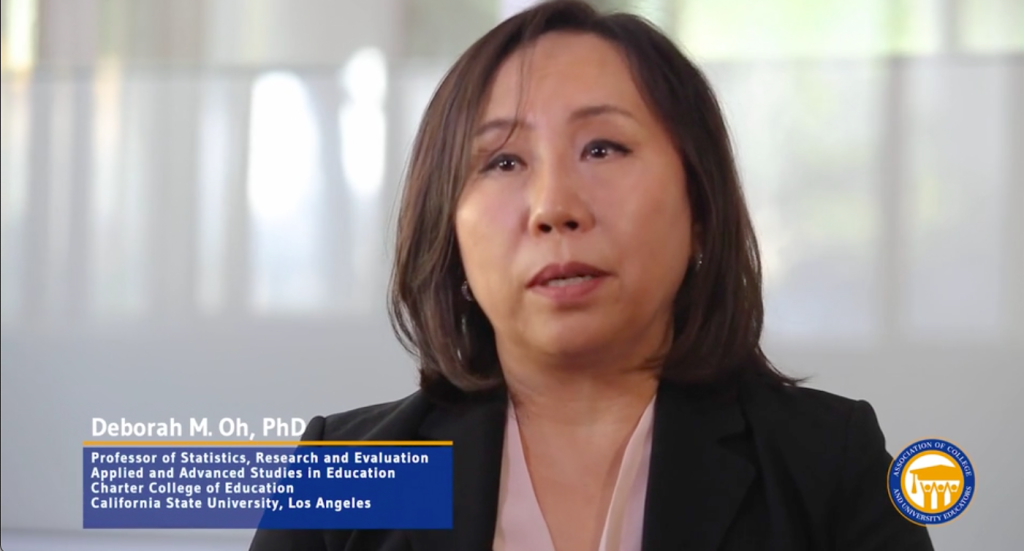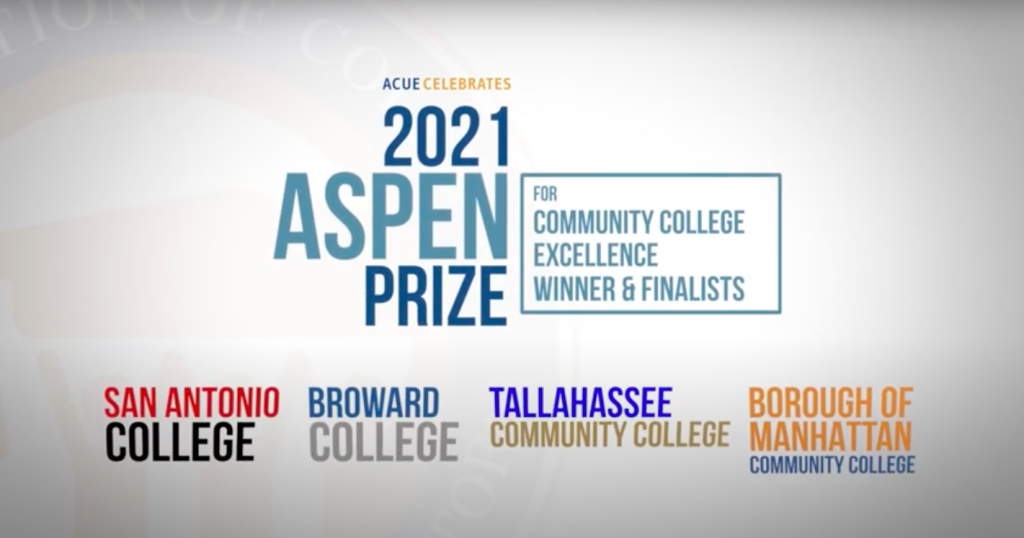Student-centered Teaching Strategies at Cal State LA

An ACUE-certified course designer at Cal State LA shares two keys to success for scaling student-centered teaching strategies. In any given academic year, there could be upwards of 1,000 students taking the quantitative reasoning courses in the Charter College of Education at Cal State LA. Deborah Oh has a pretty good idea of how each […]
Four ACUE Partners Recognized for Community College Excellence by Aspen Institute

ACUE is proud to celebrate the remarkable achievements of four institutional partners that earned the nation’s signature recognition for America’s community colleges this year. The Aspen Prize for Community College Excellence, awarded every two years, is a national recognition from the Aspen Institute awarded for institutions’ commitment to student success and equitable student outcomes. The […]
The Power of Systems
Preparing Faculty to Teach: What it Takes to Move the Needle on Student Success

By Cindy Blackwell As one of three people working at my institution’s faculty development center in March 2020, I appreciated the kudos from Cahn, Stellar and Brooks in their recent Inside Higher Ed article Don’t Blame the Technology. We worked around the clock to develop training webinars and create resources to help faculty who had never or rarely […]
“No work is more important” to student success
“Completely Transformational”: Ohio Faculty Reflect on their ACUE Journey
“It is you, our faculty, who can dismantle the barriers and create the pathways to student success — no work is more important,” Dr. Penny MacCormack, ACUE’s Chief Academic Officer, said to an audience of 122 newly ACUE-credentialed faculty who were joined by their chief academic officers and other administrative leaders. “You used practices that created community, you made […]
Say Thank You With ACUE
Student Career Readiness Starts With Faculty
Faculty Reflection: Teaching Techniques to Build Employability Skills

By Subhadra Ganguli Over my years as an economics faculty, I have always sought to refine my teaching to help my students learn. In recent years, I have become particularly interested in — and passionate about — strategies that can help develop more career-ready skills. According to the World Economic Forum, digitization is progressing at […]
